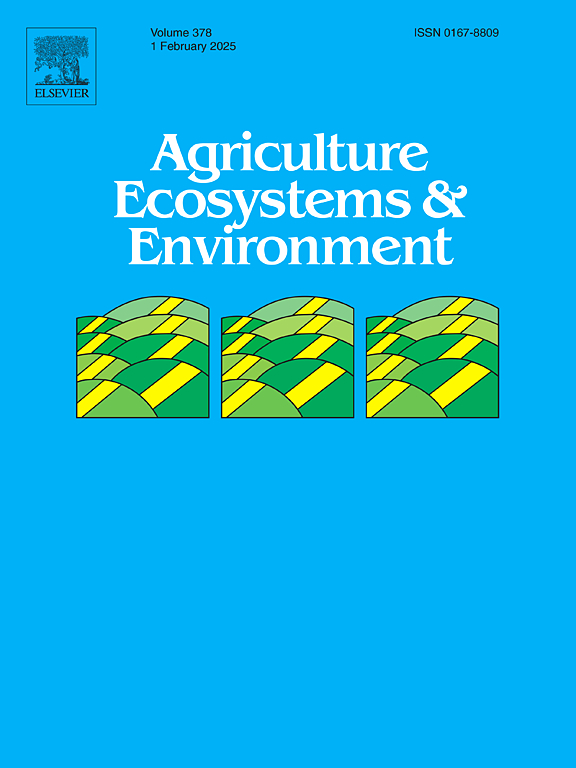Associations between scale-dependent agroecosystem factors and cocoa swollen shoot virus incidence in Côte d’Ivoire
IF 6
1区 农林科学
Q1 AGRICULTURE, MULTIDISCIPLINARY
引用次数: 0
Abstract
Understanding the association between agroecosystem factors across multiple scales is essential for sustaining production in agroecosystems under disease pressure. Cocoa swollen shoot virus (CSSV) is a devastating and currently uncontrollable epidemic, posing the greatest threat to cocoa production in West Africa. The present study investigates the associations between CSSV incidence, meteorologic conditions, soil properties, agroforestry variables and landscape composition at different scales, using Self-Organizing Maps, an analysis method that handles nonlinearity and complex variable interactions. This study was based on data collected between 2021 and 2023 in 150 cocoa plots representing diverse cocoa-growing conditions in Côte d’Ivoire, which were clustered according to factor similarity. We found that low disease incidence was primarily associated with more frequent events of extreme precipitation and lower variation in temperature. On the contrary, a high incidence of CSSV was linked to a higher density of trees hosting the virus. We drew on existing knowledge of disease epidemiology, mealybug vector biology and cocoa tree physiology to interpret these results. Additionally, plots with low disease incidence were predominantly surrounded by non-host land, suggesting that large-scale management strategies could help mitigate CSSV incidence by promoting non-host land use at the landscape level.
规模依赖性农业生态系统因素与Côte科特迪瓦可可肿芽病毒发病率之间的关系
了解跨多个尺度的农业生态系统因子之间的关联对于在疾病压力下维持农业生态系统的生产至关重要。可可肿芽病毒(CSSV)是一种毁灭性的、目前无法控制的流行病,对西非的可可生产构成最大威胁。本研究利用自组织地图(Self-Organizing Maps)这一处理非线性和复杂变量相互作用的分析方法,探讨了不同尺度下CSSV发病率与气象条件、土壤性质、农林业变量和景观组成之间的关系。这项研究基于2021年至2023年期间在150个可可地块收集的数据,这些数据代表了Côte科特迪瓦不同的可可种植条件,并根据因子相似性进行了聚类。我们发现,低发病率主要与更频繁的极端降水事件和较低的温度变化有关。相反,CSSV的高发病率与携带该病毒的树木密度较高有关。我们利用疾病流行病学、粉蚧媒介生物学和可可树生理学的现有知识来解释这些结果。此外,低发病率的地块主要被非宿主土地包围,这表明大规模管理策略可以通过在景观水平上促进非宿主土地的利用来缓解CSSV的发病率。
本文章由计算机程序翻译,如有差异,请以英文原文为准。
求助全文
约1分钟内获得全文
求助全文
来源期刊

Agriculture, Ecosystems & Environment
环境科学-环境科学
CiteScore
11.70
自引率
9.10%
发文量
392
审稿时长
26 days
期刊介绍:
Agriculture, Ecosystems and Environment publishes scientific articles dealing with the interface between agroecosystems and the natural environment, specifically how agriculture influences the environment and how changes in that environment impact agroecosystems. Preference is given to papers from experimental and observational research at the field, system or landscape level, from studies that enhance our understanding of processes using data-based biophysical modelling, and papers that bridge scientific disciplines and integrate knowledge. All papers should be placed in an international or wide comparative context.
 求助内容:
求助内容: 应助结果提醒方式:
应助结果提醒方式:


